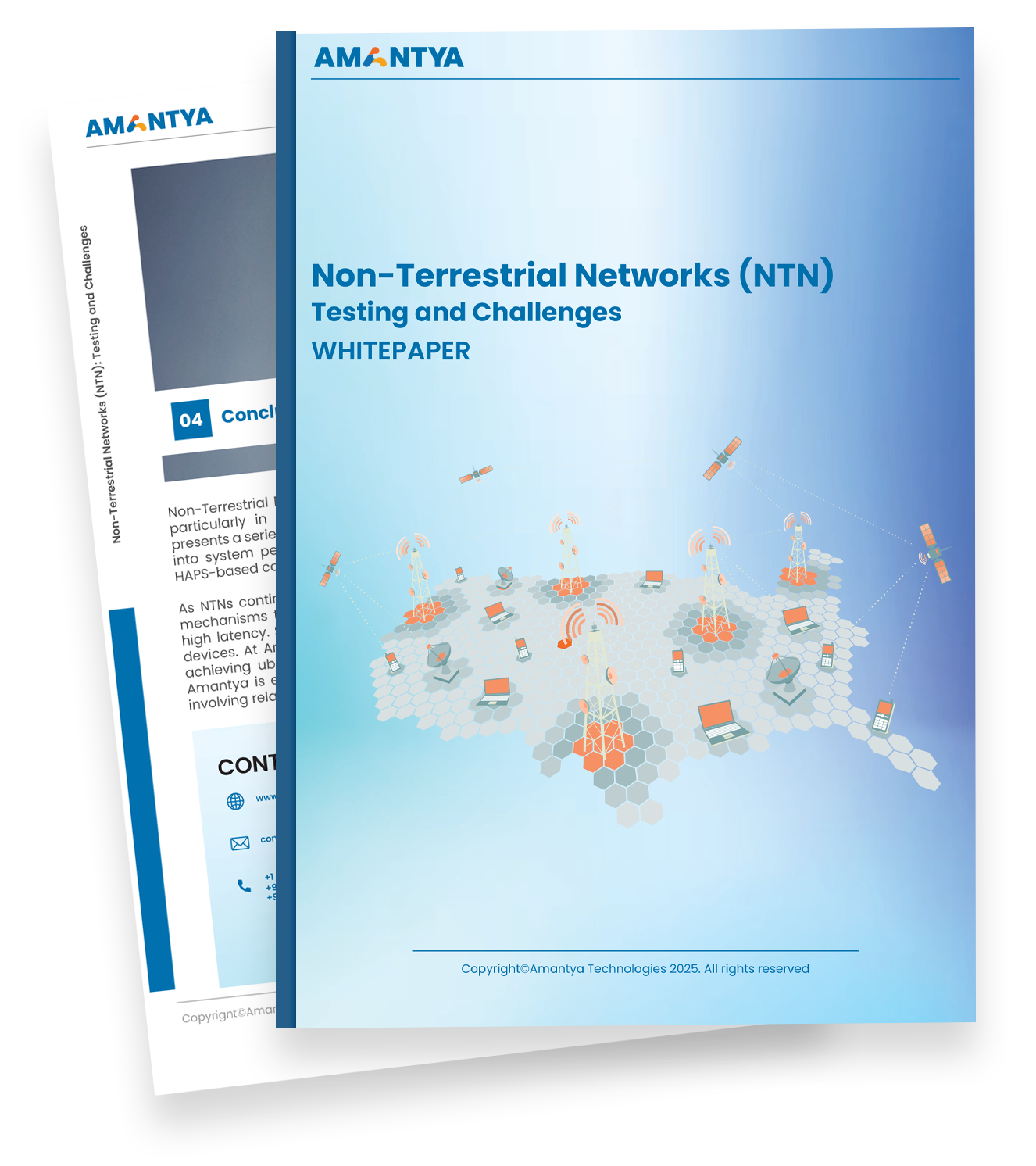Non-Terrestrial Networks (NTN): Testing and Challenges
Non-Terrestrial Networks (NTNs) are advanced communication systems that utilize satellites, high-altitude platforms (HAPS), and aerial infrastructure to deliver global connectivity beyond traditional ground-based networks.Non-Terrestrial Networks (NTNs) are advanced communication systems that utilize satellites, high-altitude platforms (HAPS), and aerial infrastructure to deliver global connectivity beyond traditional ground-based networks.

NTNs are critical for extending broadband access to remote areas and supporting applications in aviation, maritime, defense, and disaster recovery. By augmenting terrestrial 5G networks, NTNs help enable continuous coverage and global-scale IoT.
Key components like satellite constellations, HAPS, and hybrid protocol integration make NTN deployment possible. However, rigorous lab testing is essential to simulate orbital dynamics, signal propagation, and mobility handovers to ensure reliability and performance.
Non-Terrestrial Networks: Benefits and key challenges:
- Global Connectivity
- Remote and Disaster Recovery Support
- Seamless Mobility Across Domains
- IoT and Edge Coverage
- Complex Testing and Validation